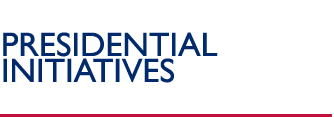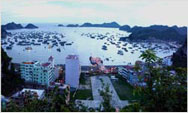Water for the Poor Initiative

The Water for the Poor Initiative, established in August 2002, will provide $970 million over three years (2003-05) to improve sustainable management of freshwater and coastal resources in over 76 developing countries. It will accelerate and expand international efforts to achieve the UN Development Goals of the Millennium Declaration and implement the Johannesburg Plan of Implementation, including to halve, by 2015, "the proportion of people who are unable to reach or afford safe drinking water" and the "proportion of people without access to basic sanitation."
- During the first two years of the initiative, over $1.2 billion (including $429 million for water-related activities in Iraq) have been invested to improve sustainable management of water resources in over 76 countries. This includes over $836 million (including $401 million in Iraq) for improved water supply and sanitation, $194 million (including $5 million for marshland restoration in Iraq) for watershed management, and $178 million (including $23 million for irrigation and fisheries in Iraq) to increase the productivity of water.
- Over 9,585,000 people in developing countries (in addition to more than 1,759,000 in Iraq) have received improved access to clean water supply. Over 11,441,000 people (in addition to more than 9,613,000 in Iraq) have received improved access to adequate sanitation since the onset of the initiative.
- Over 2,100 watershed governance groups were convened and supported during the first two years of the initiative to make decisions addressing a diversity of water uses and needs regarding basin-scale, integrated water resources.

Using Capital Markets to Fund Water Supply and Wastewater Services
Until recently, small and medium-sized municipalities in developing countries have had limited access to capital markets to finance the construction or improvement of clean water and wastewater systems. Availability of funds was restricted by high interest charges and a lack of investor interest in risky long-term debt, resulting in unfavorable pricing for municipal borrowers.
To help alleviate this crisis in Egypt, USAID's Development Credit Authority has helped secure a loan portfolio guarantee expected to leverage $40 million in loans to locally based businesses for providing contract water and wastewater services. The project will offer lower-cost septic tank evacuation services to 50,000 Egyptians in outlying areas currently without piped wastewater systems. In addition, it will provide cheaper and more extensive pipe maintenance and better customer service for 3 million people.
Under the Water for the Poor Initiative, USAID's Development Credit Authority has also helped secure loan portfolio guarantees in South Africa, Morocco, India, Bosnia, Kyrgyzstan, and Ukraine that collectively are expected to leverage over $209 million in private funds for water supply and wastewater services.
- The development of local capital markets is critical to the sustainable finance of water supply and wastewater infrastructure systems.
- Governance for water must take account of all sectors that are dependent on or key providers of water, and must not concentrate solely on drinking water supply.
- Successful water management groups are supported by broad stakeholder involvement, ranging from grassroots participation at the local level to basin-wide, national, or regional coordination.
Note: Results for this initiative were reported through USAID's consolidated reporting system
Back to Top ^
|


